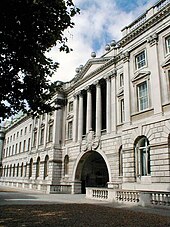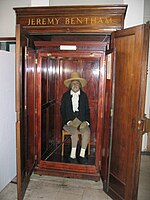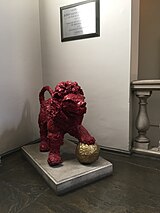University College London is a public research university in London, England. It is a member institution of the federal University of London, and is the second-largest university in the United Kingdom by total enrolment and the largest by postgraduate enrolment.
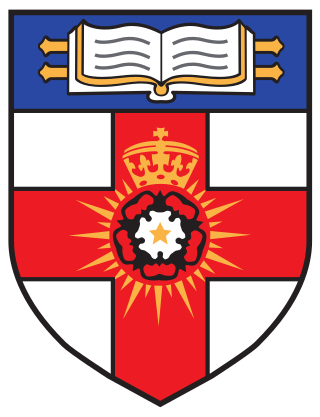
The University of London is a federal public research university located in London, England, United Kingdom. The university was established by royal charter in 1836 as a degree-awarding examination board for students holding certificates from University College London, King's College London and "other such institutions, corporate or unincorporated, as shall be established for the purpose of Education, whether within the Metropolis or elsewhere within our United Kingdom". It is one of three institutions to have advertised themselves as the third-oldest university in England. It moved to a federal structure with constituent colleges in 1900. It is now incorporated by its fourth (1863) royal charter and governed by the University of London Act 2018.

King's College London is a public research university located in London, England. King's was established by royal charter in 1829 under the patronage of King George IV and the Duke of Wellington. In 1836, King's became one of the two founding colleges of the University of London. It is one of the oldest university-level institutions in England. In the late 20th century, King's grew through a series of mergers, including with Queen Elizabeth College and Chelsea College of Science and Technology, the Institute of Psychiatry, the United Medical and Dental Schools of Guy's and St Thomas' Hospitals and the Florence Nightingale School of Nursing and Midwifery.
Rivalry between the Universities of Oxford and Cambridge is a phenomenon going back many centuries. During most of that time, they were the only two universities in England and Wales, making the rivalry more intense than it is now.
Rags are student-run charitable fundraising organisations that are widespread in the United Kingdom and Ireland. Some are run as student societies whilst others sit with campaigns within their student unions. Most universities in the UK and Ireland, as well as some in the Netherlands and the Commonwealth countries of South Africa and Singapore have a rag. In some universities rags are known as Charities Campaigns, Charity Appeals, Charity Committees, Jool or Karnivals, but they all share many attributes.

Battersea Park is a 200-acre (83-hectare) green space at Battersea in the London Borough of Wandsworth in London. It is situated on the south bank of the River Thames opposite Chelsea and was opened in 1858.

King's College London Students' Union (KCLSU) is an independent charitable organisation that works to further the interests of its members. It governs the 300 student societies and activity groups at King's. KCLSU claims to be the oldest students' union in England.
Events from the year 1829 in the United Kingdom.

The third-oldest university in England debate has been carried out since the mid-19th century, with rival claims being made originally by Durham University as the third-oldest officially recognised university (1832) and the third to confer degrees (1837) and the University of London as the third university to be granted a royal charter (1836). These have been joined more recently by University College London as it was founded as London University (1826) and was the third-oldest university institution to start teaching (1828) and by King's College London. Most historians identify Durham as the third-oldest, following standard practice in how a university is defined and how this is applied historically, although the popular press is more divided.
The Ultra-Tories were an Anglican faction of British and Irish politics that appeared in the 1820s in opposition to Catholic emancipation. The faction was later called the "extreme right-wing" of British and Irish politics.
As one of the first nine colleges founded in the United States of America—founded as Queen's College in 1766 —Rutgers, The State University of New Jersey' has two-and-a-half centuries of tradition and heritage.

University College London (UCL) was founded on 11 February 1826, under the name London University, as a secular alternative to the strictly religious universities of Oxford and Cambridge. It was founded with the intention from the beginning of it being a university, not a college or institute. However its founders encountered strong opposition from the Church of England, the existing universities and the medical schools which prevented them from securing the Royal Charter under the title of "university" that would grant "London University" official recognition and allow it to award degrees. It was not until 1836, when the latter-day University of London was established, that it was legally recognised and granted the authority to submit students for the degree examinations of the University of London.

The New Mexico State University teams are called the Aggies, a nickname derived from the university's agricultural beginnings. The mascot is known as "Pistol Pete". NMSU's colors are crimson and white. Since 2023 the Aggies have competed in Conference USA in all men's and women's sports. New Mexico State sponsors six men's and ten women's teams in NCAA sanctioned sports. The athletic director Mario Moccia, who had held the position since January 2015, was fired in January 2025 following an investigation into scandals during the 2022-23 NMSU men's basketball season. Amber Burdge, one of NMSU's deputy athletic directors, is his temporary replacement.

George William Finch-Hatton, 10th Earl of Winchilsea, 5th Earl of Nottingham was an English peer and politician known for participating in the Wellington–Winchilsea duel with the then Prime Minister, Arthur Wellesley, 1st Duke of Wellington in 1829.
The London Varsity is an annual university students' union match contested between the University College London and King's College London, the two founding colleges of the University of London. In rugby, the Varsity is traditionally known as the "Jeremy George Cup" named after the founders of the respective universities, Jeremy Bentham and King George IV. Founded in 2004 by Adam Sommerfeld as a rugby union match, the game celebrates the rivalry between University College London and King's College London, which spans nearly two centuries.

Roar News is the student newspaper of King's College London. It is editorially independent of both the university and the students' union.
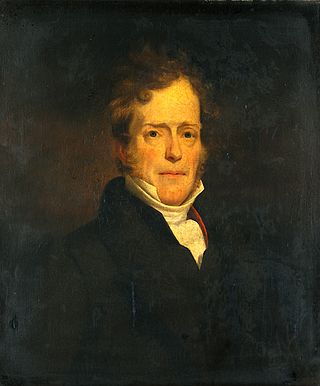
John Robert Hume (c.1781–1857) was a Scottish surgeon and physician. He is cited as an example of a 19th-century medical career that arrived at a high position in the profession, without early qualifications.
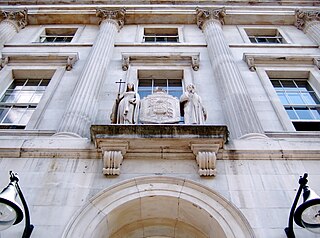
The King's Building is a Grade I listed building that forms part of the Strand Campus of King's College London in the United Kingdom. Originally named the College Building, the King's Building was designed by Sir Robert Smirke in the course of the college's foundation in 1829. As the founding building, it was built between 1829 and 1831 on land granted to King's College by the government to complete the riverside frontage of Somerset House.

The history of King's College London, on its own, spans over 190 years since it was founded as a 'university college' by royal charter in 1829. However, its formation as a full 'university' would have to wait until 1836 as a part of the University of London. The full history, however, includes the medical schools that now constitute GKT School of Medical Education. This incorporates St Thomas's Hospital Medical School, one of the oldest medical schools in Britain, with a history of medical teaching that can be traced back to at least 1561. St Thomas' Hospital itself dates back to 1173, and has roots in the establishment of St Mary Overie Priory in 1106.

The Wellington-Winchilsea Duel took place on 21 March 1829 at Battersea, then in Surrey on the outskirts of London. It was a bloodless duel fought between the British Prime Minister Arthur Wellesley, Duke of Wellington and the Earl of Winchilsea.
